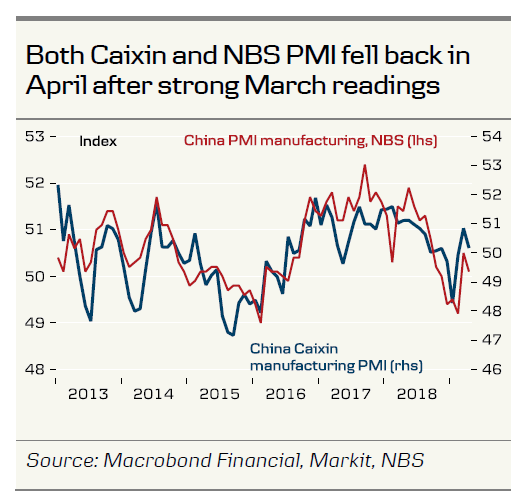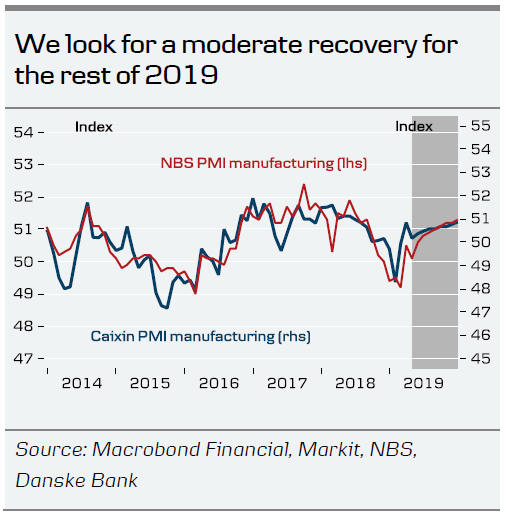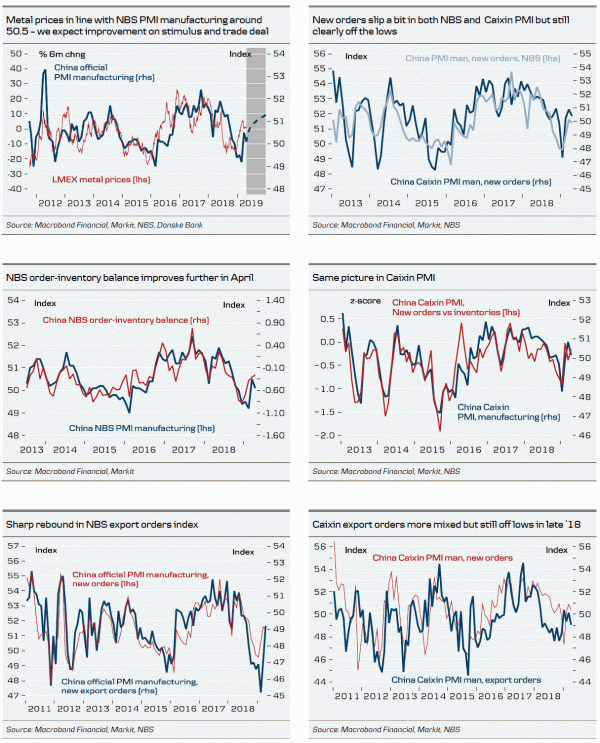Key points
- Chinese PMI corrects lower in April.
- We see it as mainly a correction to strong March numbers.
- The numbers confirm the recovery is likely to be moderate
Chinese PMI came out weaker than expected (see charts for details) but as we wrote in China Weekly Letter on Friday, the rebound in March data was probably too good to be true and some correction in April was to be expected. We should expect the same in other April data coming up. Hence, the positive surprise from China is probably behind us for now, leaving more of the burden of recovery evidence on other regions. We still expect a recovery in China, but the numbers support the case that the recovery will be moderate.
The weaker numbers will keep the hope of further monetary easing alive in markets, so the numbers may not be that negative for Chinese stocks or global stock markets. We see a 50-50 chance of a broad-based cut in the Reserve Requirement Ratio, as China needs to weigh the short-term need for more support to the recovery against the long-term goal of financial stability and not fuelling financial leverage in markets. However, we do expect more measures to lift private consumption of autos and home appliances, etc. and more targeted lending towards SMEs in the private sector.
Just to recap why we expect a Chinese recovery, we see three drivers: First, Chinese stimulus from both monetary policy and fiscal policy should increasingly kick in. We have seen more signs lately that housing demand is getting a lift and retail sales have improved somewhat following household tax cuts. Second, we expect a US-China trade deal to be signed within the next 1-2 months, which will further reduce the uncertainty from the trade war that seems to have weighed significantly on sentiment in China both among consumers and businesses. Third, there are some signs that companies have responded to the uncertainty by cutting inventories, which led to a temporary drop in production. The PMI data suggests that this process is coming to an end as the orderinventory balances improve in both the NBS and the Caixin PMI data.
















